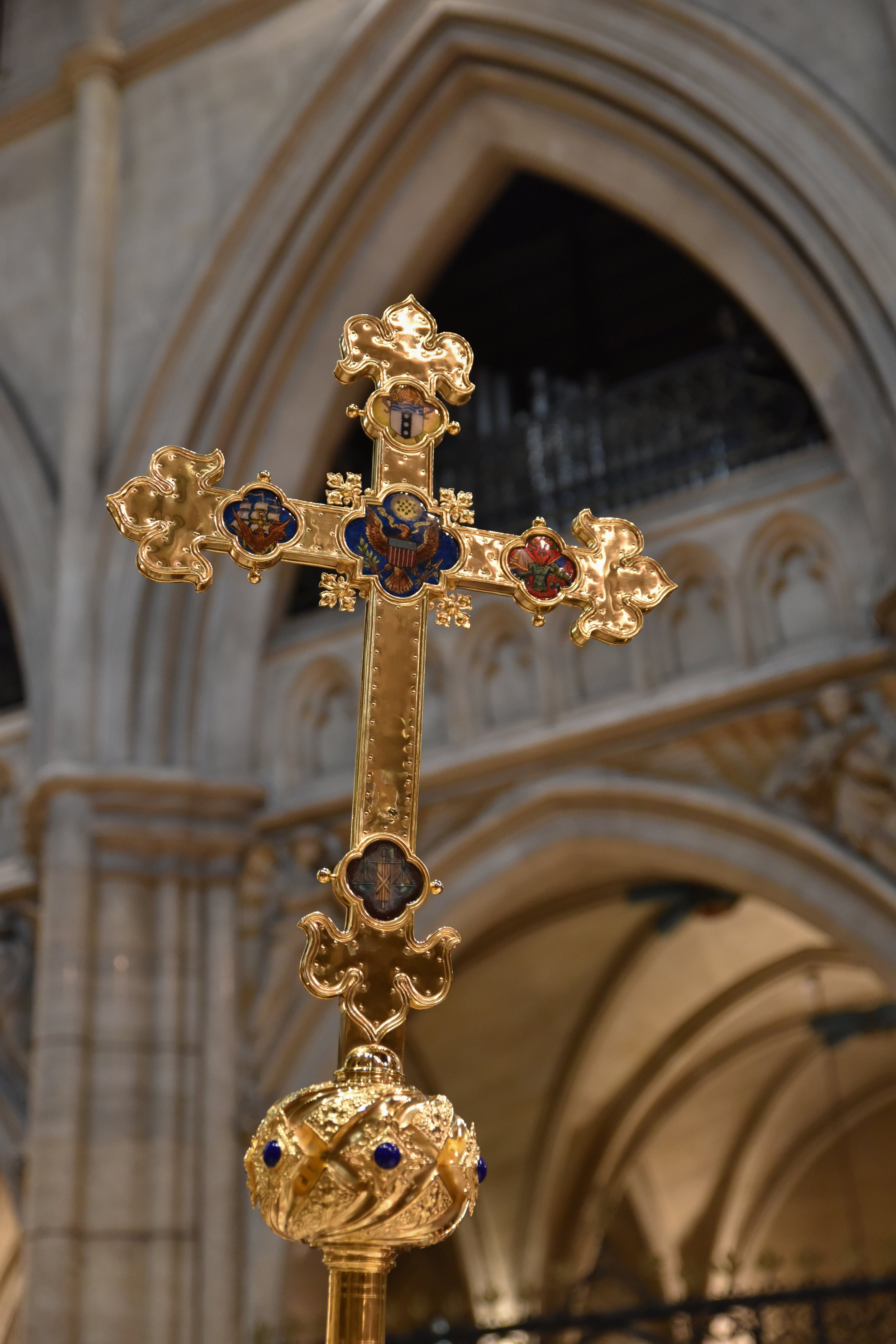Our Processional Cross
The large cross carried at most of our services was acquired by the Cathedral in 1922, the year the Church of the Holy Trinity was named a pro-Cathedral, and the year before the dedication of the Memorial Cloister.
Bishop Israel
It was given to the church by the people of the Diocese of Erie, in Pennsylvania, in memory of Bishop Rogers Israel, D.D. (1854-1921). Bishop Israel was the first bishop of Erie.
Following the death of his beloved wife Sara in 1916, and at the age of 62, the Bishop left for France on July 4th, 1917. He served as a chaplain for the American Red Cross, working tirelessly at the front and at base hospitals. While ministering to combatants, he also acted as Bishop-in-Charge of the Convocation of American Churches, serving in Paris here at Holy Trinity Church (not a cathedral until 1923). He returned to his diocese after the war but died in January 1921 from the effects of his long and self-sacrificing efforts.
To honor his memory, Holy Trinity vestryman Clair G. Irish organized fundraising from Pennsylvania parishes and delivered the cross to the church on All Saints’ Day 1922.
The cross is made of oak covered in hammered brass, mounted on a gemmed orb and supported by a solid ebony staff. Its design includes five medallions in translucent enamel on both front and back. Grouped around the Agnus Dei are four smaller medallions represented Joan of Arc, Saint George and the Dragon, Saint Quentin, and Columbia. On the reverse side, surrounding the Great Seal of the United States, are medallions representing the Church, the Army, the Navy, and the Supreme Court. Below the orb, along with Bishop Israel’s personal seal, is the inscription:
To the glory of God and in loving memory of Rogers Israel D.D., First Bishop of Erie, Pennsylvania. This cross was given by his people in the Diocese of Erie to commemorate his services in France. 'Endure hardness as a good soldier of Christ.’ All Saints Day 1922
The cross was restored in 2022 by the company Camille Orfèvre and necessitated the intervention of not only silversmiths but of a wood craftsman to reconstruct the internal support of the cross, and an enameler to repair the damaged medallions.
Golden processional cross
Golden processional cross



